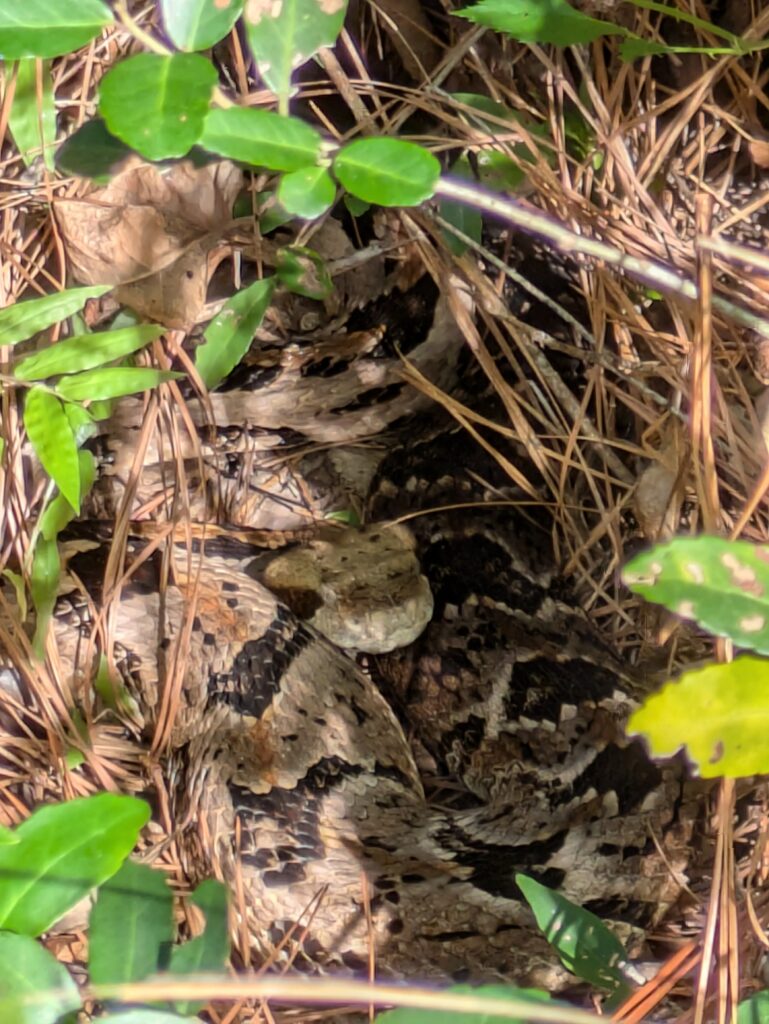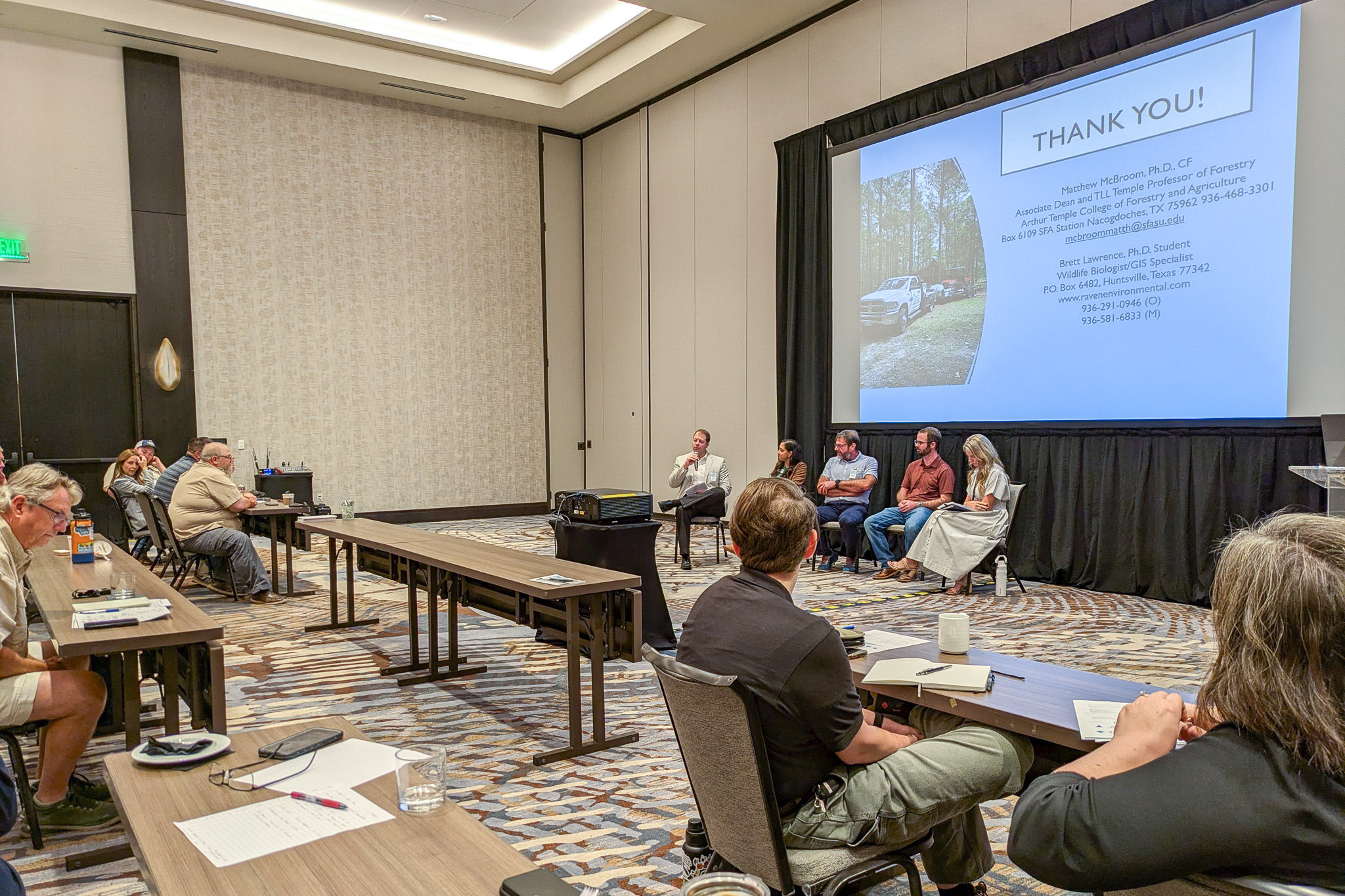The 2025 Texas Forests and Water Forum brought together experts and stakeholders from across the state on Sept. 17 and 18 in Conroe, Texas, to discuss the relationship between managed forests and watershed health.
The event, hosted by the Texas Partnership for Forests and Water, included a field tour of the Cook’s Branch Conservatory and presentations by experts in forestry and water resources.
“This event is important because everyone knows water is important and everyone knows forests and natural resources are important,” said event organizer Julia Schmidt. “But it is less well known how they work together and just how intertwined they are as major resources.”
On the event’s first day, attendees took a field tour of Cook’s Branch Conservatory. One part of the tour covered wildlife. Attendees went rattlesnake tracking, which the conservatory does for management and conservation. The other part of the tour covered the conservatory’s forestry work, showcasing field laboratory plots and forestry tools.
The second day consisted of various presentations from water and forestry professionals. The Texas Water Resources Institute’s Emily Monroe presented an overview of how forestry supports watershed health in Texas.
The goal of the presentation was to familiarize people with watershed protection plans (WPPs) and explain how forestry can be included in them, said Monroe. Forestry has many watershed benefits, such as water quality improvements, drought resistance, and flood mitigation, she said. Despite these benefits, forest management is largely missing from WPPs.
“There aren’t any forest management measures that I know of in the plans, because they’re community-driven plans, and if the community is unaware of the benefits and does not ask for it to be in there, then it won’t be in there.”
Monroe also spoke about water best management practices and their voluntary implementation in East Texas. People often don’t realize how much forestry protects the environment when done correctly, said Monroe.
Other speakers at the forum included a Brushy Creek case study panel, presentations from the Texas Commission on Environmental Quality and Texas Water Development Board, and a statewide water update from the Texas Water Foundation.
“It spurred a lot of conversation on how we can turn talk into action,” said Schmidt. “We can all talk, we can all agree that this is important, but taking those steps into true action will make a difference past the talk.”
Throughout the event, there were many opportunities for networking, allowing water and forest professionals to share ideas and get involved in other fields.
“I took away that foresters are introverts but really wonderful people,” said Monroe, “The important thing is telling the story about what they’re doing and how they are protecting the environment.”






